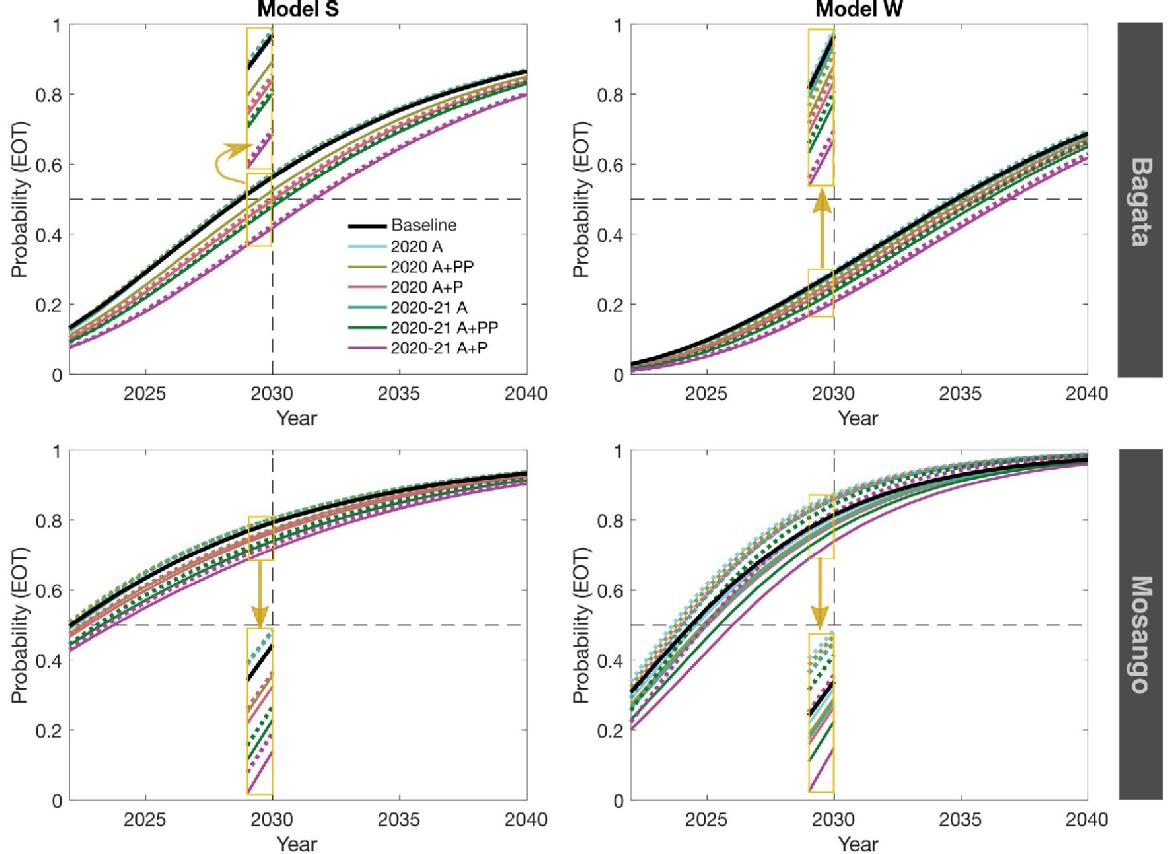COVID-19 interruptions/ Interruption COVID-19
The modelling teams at Warwick and Swiss TPH have been using our gHAT models to factor in an interruption in interventions during the COVID-19 pandemic. Using models we simulate the potential impact of COVID-19 on reported case numbers, new transmission of the disease, and the time to elimination of transmission (EoT), particularly in the context of the WHO’s goal to achieve zero transmission to humans by 2030.
HAT MEPP study

Motivated by the widespread disruption to health systems caused by the COVID-19 pandemic, the team's recent research has sought to understand the impact that unplanned disruptions to the gHAT control programme could have on disease burden and time to achieve the elimination of transmission (EoT). Analysis of interruption scenarios was performed on 38 health zones from the former Bandundu province of the DRC. Dates and durations of interruptions were loosely based on the COVID-19 pandemic and we considered how interruptions to different programme components would impact transmission dynamics, disease burden and the probability and year of EoT.
This important piece of research demonstrates that disruptions to gHAT control programmes can impact the level of disease burden and the probability and year of EoT. However, they are believed to be fairly resilient to short-term shocks if activities are resumed post-interruption with EoT not predicted to be delayed by more than the length of interruption plus one additional year under the most extreme interruption scenario (see figure above). This is likely to be a consequence of the slow-progressing nature of the gHAT infection.
Peer-reviewed paper: Huang, CH, Crump, RE, Crowley, EH, Hope, AH, Bessell, PR, Shampa, C, Miaka, EM, Rock, KS (2023). A modelling assessment of short- and medium- term risks of programme interruptions for gambiense human African trypanosomiasis in the DRC.Link opens in a new window PLoS Neglected Tropical Diseases. Paper summaries: EnglishLink opens in a new window FrenchLink opens in a new window
NTD Modelling Consortium study
The Warwick and Swiss TPH teams independantly fitted their models to data to two health zones of the Democratic Republic of Congo (DRC) - Bagata and Mosango, both moderate-risk - and use them to assess what the impact of interruptions of medical interventions (active screening and passive surveillance) could have in these regions.

We predicted that delays in achieving elimination of transmission (EOT) would be similar to or less than the length of interruption. For Mosango, EOT may still be achieved by 2030, however, in Bagata the elimination goal is unlikely without intensifying interventions, even without interruptions.
The results suggest that retaining functioning passive surveillance, even partially, can help to avoid significant delays in EOT and to prevent substantial increases in mortality. Mitigation through increasing coverage of active screening following interruption could also improve the probability of meeting the 2030 EOT goal.

